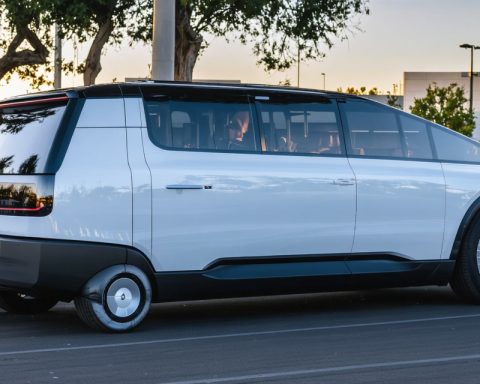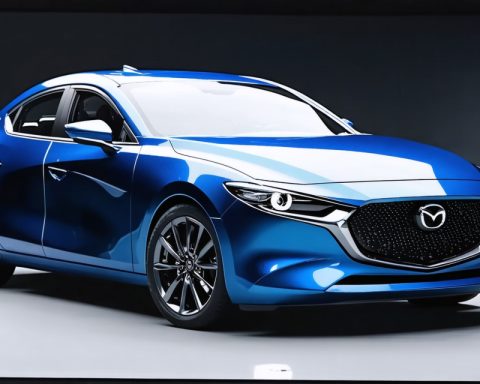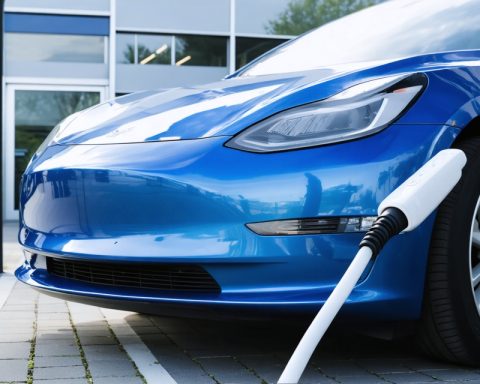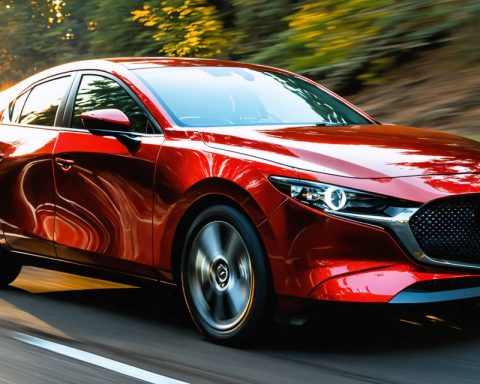- Elon Musk views India as a pivotal market for Tesla amidst global challenges, attracted by a large consumer base and growing EV interest.
- India’s EV sector is rapidly transforming, with strong competition from local companies like Tata Motors and Mahindra.
- Chinese EV leader BYD threatens Tesla’s plans, poised to enter India with cost-effective and tech-savvy products.
- BYD’s rumored manufacturing plant in Telangana could significantly alter the competitive landscape in India’s automotive market.
- BYD’s successful rise in China exemplifies its potential impact, with a notable 90.4% increase in sales last year.
- Improving India-China relations may bolster BYD’s entry, supported by strategic diplomatic moves under Indian leadership.
- Tesla faces a strategic juncture, needing to navigate local challenges to realize its vision of dominating the Indian EV market.
Elon Musk, the charismatic CEO of Tesla, perceives India as a beacon amidst challenging global market conditions. The allure of India’s vast consumer base and burgeoning interest in electric vehicles (EVs) paint a promising picture. However, while Tesla sets its sights on this promising frontier, storm clouds gather in the form of fierce competition from unexpected quarters.
In a dramatic twist, India’s own EV landscape has matured at a breakneck pace. Homegrown champions like Tata Motors and Mahindra are no longer mere spectators, but formidable competitors equipped with an intimate understanding of the local market and the adaptability that Tesla has yet to master. Their vehicles, already traversing Indian roads, resonate with the budget-conscious and environmentally aware mindset of Indian buyers.
But the real strategic tussle poised to disrupt Tesla’s plans comes from China’s EV titan, BYD (Build Your Dreams). Known for their cost-effective and tech-savvy electric cars, BYD is crafting a narrative that captivates both the hearts and wallets of consumers. Rumors are gaining momentum that they intend to establish a manufacturing stronghold in the southern state of Telangana. The decision holds the potential to revolutionize India’s automotive market dynamics.
BYD, with its impressive lineage of producing affordable yet efficient cars, has already rattled Tesla’s cage in China. Reports showcase BYD’s meteoric rise, recording a 90.4% increase in passenger vehicle sales last year, far exceeding what Tesla could muster. If this giant sets foot on Indian soil, it doesn’t just spell competition for Tesla but an upheaval of the existing order. India, with its intricate balance of price-sensitive and aspirational consumers, could well become BYD’s next success story.
The geopolitical climate further adds layers to this unfolding drama. Recent warming ties between India and China could ease BYD’s path into India, paving the way for a potentially seismic shift in market dynamics. Indian Prime Minister Narendra Modi’s nuanced approach toward China might facilitate this transition, provided it harmonizes with national interests.
In essence, Tesla now stands at crossroads. While entering the Indian market presents a golden opportunity, the landscape is fraught with competition and complexity. Musk’s vision of Tesla cars speeding down Indian roads might be closer than ever to fruition, but without a keen grasp of local sensibilities and competitive strategies, the road could be bumpier than anticipated. The ultimate victor in this race will not only conquer a new market but dictate the future of electric mobility in one of the world’s most populous nations.
Will Tesla Survive the Indian Electric Vehicle Revolution?
India’s EV Market Dynamics: A Deep Dive
India’s electric vehicle (EV) market has emerged as one of the most vibrant and rapidly growing sectors worldwide. Despite Tesla’s global recognition and innovative prowess, it faces significant challenges entering this intricate landscape. Here are several critical factors and insights regarding the electric vehicle surge in India:
1. Local Competitors with a Home Ground Advantage
– Tata Motors and Mahindra’s Dominance: Tata Motors commands a substantial share of India’s EV sector, primarily due to its affordable models like the Tata Nexon EV. The success is based on strategic pricing catering to India’s middle class and a growing network of charging infrastructure.
– Mahindra’s Strategic Insights: Mahindra is leveraging its deep-rooted understanding of rural and urban markets, offering versatile EVs that span personal and commercial vehicle needs.
2. BYD’s Emerging Impact
– BYD’s Market Strategy: With a record 90.4% increase in passenger vehicle sales in China, BYD’s global strategy hinges on affordability and high-tech integration. Establishing a manufacturing facility in Telangana could drastically reduce costs and enhance supply chains in India.
– Technology and Innovation: BYD’s models integrate advanced battery technology, potentially outpacing Tesla in both cost-efficiency and technical appeal.
3. Economic and Geopolitical Considerations
– India-China Relations: The geopolitical climate could significantly influence BYD’s operational strategies and partnerships in India, potentially easing regulatory challenges.
– Economic Projections: India’s emphasis on sustainable development and government incentives for EV adoption projects a market trajectory that could grow tenfold by 2030.
How-To Steps & Life Hacks for Prospective EV Buyers in India:
1. Research Incentives: Familiarize yourself with government subsidies and incentives for EV purchases to maximize savings.
2. Evaluate Infrastructure: Assess the availability of charging stations in your locality to ensure practicality in daily commuting.
3. Consider Total Cost of Ownership: Factor in maintenance costs, which are typically lower for EVs compared to conventional vehicles.
4. Test Various Models: Before deciding, test drive multiple EV models for comfort, range, and technology features.
Market Forecasts & Industry Trends
– Growth Trajectory: The Indian EV market is expected to grow at a CAGR of over 35% in the next five years. The introduction of new players like BYD could further accelerate this growth.
– EV Policy Implementation: State governments in India are increasingly introducing policies favoring EV infrastructure development, enhancing the market’s attractiveness.
Controversies & Limitations
– Infrastructure Challenges: Despite government efforts, the charging infrastructure remains a critical bottleneck for widespread EV adoption.
– Battery Disposal and Sustainability: The lifecycle and disposal of EV batteries present environmental challenges that the industry must address sustainably.
Pros & Cons Overview
– Pros: Lower operational costs, reduced carbon footprint, government incentives.
– Cons: Initial purchase cost, charging infrastructure development, battery longevity concerns.
Actionable Recommendations
– Stay Informed on Policies: Regularly check for updates on EV policies and incentives that could impact purchase decisions.
– Explore Local Markets: Consider locally manufactured EVs like Tata and Mahindra for better service and maintenance support.
– Keep an Eye on BYD: As BYD establishes its footprint, potential buyers could benefit from the competitive pricing and technological advancements offered by this new entrant.
For more insights into the electric vehicle revolution and developments in India, stay updated with reliable sources and industry analyses. Discover more about market trends on TechCrunch and delve into geopolitical developments with BBC.













